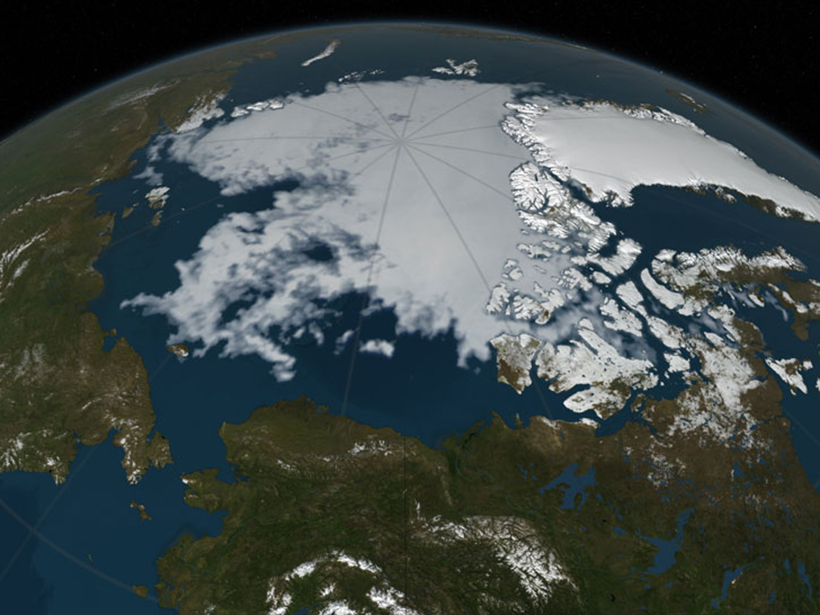Source: Journal of Geophysical Research: Oceans
Although the concentrations of nitrous oxide and methane in Earth’s atmosphere have increased substantially during the last century, the contributions from the oceans to the global budgets of these potent greenhouse gases remain poorly constrained. This lack of information is particularly true in the Arctic Ocean, where the majority of trace gas measurements to date have been collected from a small number of sites believed to be methane hot spots.
To improve our understanding of trace gas cycling in the Arctic, Fenwick et al. collected water samples during three separate research cruises in 2015. Collectively, the samples, which cover a 10,000-kilometer-long transect from the Bering Sea to Baffin Bay, provide the most comprehensive data set to date from the North American side of the Arctic Ocean.
The results indicate that nitrous oxide is primarily produced in the sediments on the continental shelves of the Bering and Chukchi seas and that it persists as the water is transported eastward across the ocean to the Canadian Arctic Archipelago. In contrast, the team found that the ocean’s methane concentrations are more heterogeneous, reflecting varying, local inputs that likely include processes related to the growth and melting of sea ice, the formation of methane in the sediment, and the rapid consumption of methane in the water column by microbes.
Although the team measured elevated concentrations of both trace gases in the subsurface water column, surface concentrations were closer to atmospheric equilibrium values, and the exchange of these gases between the sea and air was close to neutral. These results indicate that the large swath of Arctic the team sampled is neither a major source nor sink of these gases.
In addition to providing insight into the factors controlling the distribution of methane and nitrous oxide in the North American portion of the Arctic Ocean, this study establishes a crucial benchmark to which future data can be compared. (Journal of Geophysical Research: Oceans, https://doi.org/10.1002/2016JC012493, 2017)
—Terri Cook, Freelance Writer
Citation:
Cook, T. (2017), A benchmark for trace greenhouse gases in the Arctic Ocean, Eos, 98, https://doi.org/10.1029/2017EO077827. Published on 01 August 2017.
Text © 2017. The authors. CC BY-NC-ND 3.0
Except where otherwise noted, images are subject to copyright. Any reuse without express permission from the copyright owner is prohibited.

